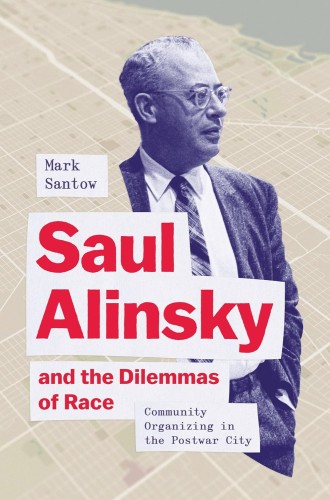The strengths and limitations of Saul Alinsky’s approach
Mark Santow’s intellectual biography of the influential organizer explores how his Chicago coalitions wrestled with the challenges of race.

Saul Alinsky and the Dilemmas of Race
Community Organizing in the Postwar City
I cut my teeth in Saul Alinsky–style organizing with COPS/Metro Alliance, a San Antonio affiliate of the Industrial Areas Foundation, which Alinsky founded in Chicago in 1939. IAF fosters a form of broad-based institutional organizing that works by creating community-based alliances to advocate for social, political, racial, and economic justice. Schools, PTAs, churches, synagogues, mosques, labor unions, and other groups join the affiliate organization in order to build political and economic power for working people’s communities.
When I first started, longtime COPS leaders shared stories about the floods that would ravage the west side of town in the 1970s. In the neighborhoods where Latinx immigrants predominantly lived, rainwater often swept through the streets, rising up through doors, seeping into walls, and filling houses. People told me they had memories of clearing out sludge from their ovens. Cars were swept away, and occasionally, children. The richer, Whiter parts of town had the infrastructure that the West Side lacked: not only proper drainage systems but also decent parks, grocery stores, and banks—social and economic institutions essential for a community’s health and stability.
Similar stories of racial segregation and economic extraction can be told about cities across the country. In midcentury Chicago, such stories plagued Black neighborhoods, as Mark Santow explores in his new book. Santow shows how Alinsky and the organizations he helped found built political and economic power to confront deep inequalities rooted in the social geography of race—the relationship between race, place, and property. Where you live, what public and health services you have access to, what kinds of jobs are open and available to you, what sort of power you have at the workplace, how safe and stable your schools and housing are, and what your racial identity is: these factors are all related.




